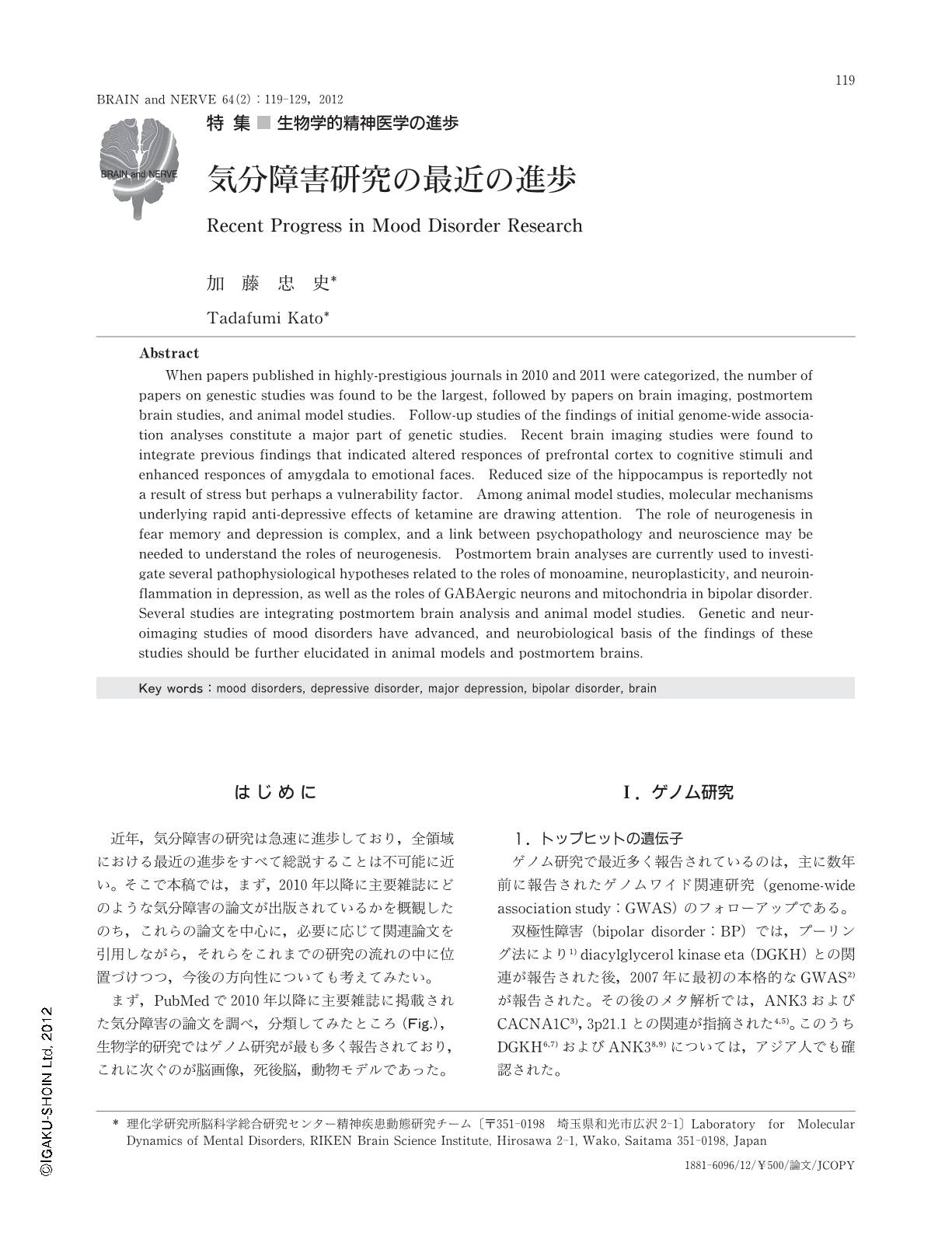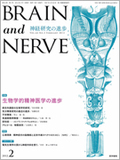Japanese
English
- 有料閲覧
- Abstract 文献概要
- 1ページ目 Look Inside
- 参考文献 Reference
はじめに
近年,気分障害の研究は急速に進歩しており,全領域における最近の進歩をすべて総説することは不可能に近い。そこで本稿では,まず,2010年以降に主要雑誌にどのような気分障害の論文が出版されているかを概観したのち,これらの論文を中心に,必要に応じて関連論文を引用しながら,それらをこれまでの研究の流れの中に位置づけつつ,今後の方向性についても考えてみたい。
まず,PubMedで2010年以降に主要雑誌に掲載された気分障害の論文を調べ,分類してみたところ(Fig.),生物学的研究ではゲノム研究が最も多く報告されており,これに次ぐのが脳画像,死後脳,動物モデルであった。
Abstract
When papers published in highly-prestigious journals in 2010 and 2011 were categorized,the number of papers on genestic studies was found to be the largest,followed by papers on brain imaging,postmortem brain studies,and animal model studies. Follow-up studies of the findings of initial genome-wide association analyses constitute a major part of genetic studies. Recent brain imaging studies were found to integrate previous findings that indicated altered responces of prefrontal cortex to cognitive stimuli and enhanced responces of amygdala to emotional faces. Reduced size of the hippocampus is reportedly not a result of stress but perhaps a vulnerability factor. Among animal model studies,molecular mechanisms underlying rapid anti-depressive effects of ketamine are drawing attention. The role of neurogenesis in fear memory and depression is complex,and a link between psychopathology and neuroscience may be needed to understand the roles of neurogenesis. Postmortem brain analyses are currently used to investigate several pathophysiological hypotheses related to the roles of monoamine,neuroplasticity,and neuroinflammation in depression,as well as the roles of GABAergic neurons and mitochondria in bipolar disorder. Several studies are integrating postmortem brain analysis and animal model studies. Genetic and neuroimaging studies of mood disorders have advanced,and neurobiological basis of the findings of these studies should be further elucidated in animal models and postmortem brains.

Copyright © 2012, Igaku-Shoin Ltd. All rights reserved.


